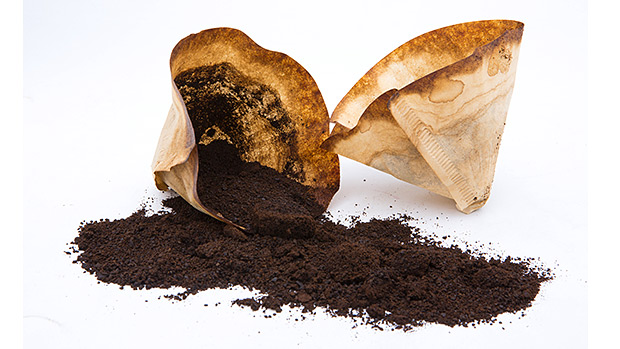I’m going to tell you something but I don’t want you to overreact, okay? Just promise me you’ll sit still and not rush into the kitchen and start rifling through your Rubbermaid trashcan. There’ll be time for that later, alright?
Okay then. Here goes:
You know that pile of wet, gloppy, coffee grounds that you plop into the garbage every morning? Well, it looks like the stuff might actually be a fat-fighting food.
It’s true, but on second thought, you probably won’t want to go through your trash to rescue this morning’s grounds, regardless of its fat-fighting ability; you’re no animal. Still, you should hear me out because you might just want to start saving them in the future.
Scientists from Australia have been studying these coffee grounds for seven years to see if they’re actually a functional food that can prevent or reverse metabolic disease and the results of a recent study look promising. Granted, this study involved rats, but there’s no strong reason to think it wouldn’t work for humans too.
What They Did
Aussie rodent wranglers from the University of Southern Queensland bought 48 Wistar rats and randomly divided them into four groups for a 16-week feeding protocol:
- A group that was fed a cornstarch diet for 16 weeks.
- A group that was fed a cornstarch diet for 8 weeks but then supplemented with a 5% dried coffee grounds for the final 8 weeks.
- A group that was fed a high-carbohydrate, high-fat diet for 16 weeks.
- A group that was fed a high-carbohydrate, high-fat diet for the first 8 weeks, but then supplemented with 5% dried coffee grounds for the final 8 weeks.
What They Found
Rats who were fed spent coffee grounds reduced their bodyweight, abdominal fat, total body fat, systolic blood pressure, and concentrations of triglycerides and non-esterified fatty acids (free fatty acids that arise from the breakdown of triglycerides).
They also exhibited improved glucose tolerance along with improved structure and function of the heart and liver. Further, the rats increased the diversity of their gut microbiota, which correlated strongly with all the metabolic changes observed.
Some of you science sleuths out there might be thinking, “Wouldn’t it be easier to drink regular coffee? Why bother with the grounds?”
Good question. Coffee grounds contain much the same obesity-attenuating ingredients as coffee, stuff like caffeine, chlorogenic acid, diterpenes, and trigonelline, only in much lower concentrations than the original coffee.
However, the act of brewing modifies some of these compounds into melanoidins, which are brown-colored polymers that are formed when sugars and amino acids combine (through the Maillard reaction) at high temperatures.
In turn, these melanoidins sneak through the digestive tract to the large intestine, where they’re metabolized by gut bacteria and fermented into short-chain fatty acids. In turn, these fatty acids act like miniature versions of “The Property Brothers” on HGTV and improve the quality of the gut microbiome.
Specifically, the coffee grounds decreased the ratio of Firmicutes to Bacteroidetes, and an increased ratio of these two bacteria has been “described as a proxy for obesity” in humans and other mammals.
The coffee grounds also reduced the number of bacteria from the Erysipelotrichaceae family, and that mouthful of a bacterium has been found to exist in high numbers in people who have colorectal cancer and inflammatory bowel disease.
This proposed method of action makes sense as plenty of studies, human studies among them, have shown that modulation of gut bacteria in general through the use of prebiotics can reduce bodyweight and inflammation while improving glucose metabolism, along with all of the other beneficial things observed in this particular study.

How to Use This Info
You may think that it’s way too premature to start using coffee grounds to lose body fat or improve metabolic health in general; that you’d prefer to wait for additional studies.
That makes sense, but the lead investigator of this study, Professor Lindsay Brown, isn’t waiting. He’s currently putting coffee grounds in his bread maker and adding them to muffins, cakes, or anything else one might use actual coffee in.
If you want to try it yourself, collect your morning coffee grounds, dry them in the oven at 140 degrees (Fahrenheit) for an hour or two, and then add a spoonful to your yogurt, protein drink, cereal bowl, or anywhere else you think it might work.
To approximate what the rats ingested, a 150-pound person would need to ingest about 35 grams a day. That’s about three level tablespoons, which might require a little too much imagination and effort to successfully incorporate into your daily diet.
Personally, I’ve been experimenting with just one tablespoon a day to see if it’s a feasible long-term strategy. I tried mixing it into a protein drink and a glass of kefir, but it’s a little gritty and it tends to eventually fall out of suspension and sink to the bottom of the glass. I had better luck when I added it to my breakfast bowl of fruit, protein powder, and milk.
I also tried grinding it down a bit further with a mortar and pestle and that helped a bit, making it more powdery and less sandy.
Whether it will improve my metabolic profile, I don’t know. I’m already using plenty of nutraceuticals to accomplish just that, but regardless, I like the idea of adding coffee grounds to my diet. They are, after all, plant based and as such contain a large array of polyphenols, many of which may contribute to my health in ways I can’t even guess.
Source
- Lindsay Brown, et al. “Modulation of gut microbiota by spent coffee grounds attenuates diet-induced metabolic syndrome in rats,” The FASEB Journal, 10 February, 2020.


























